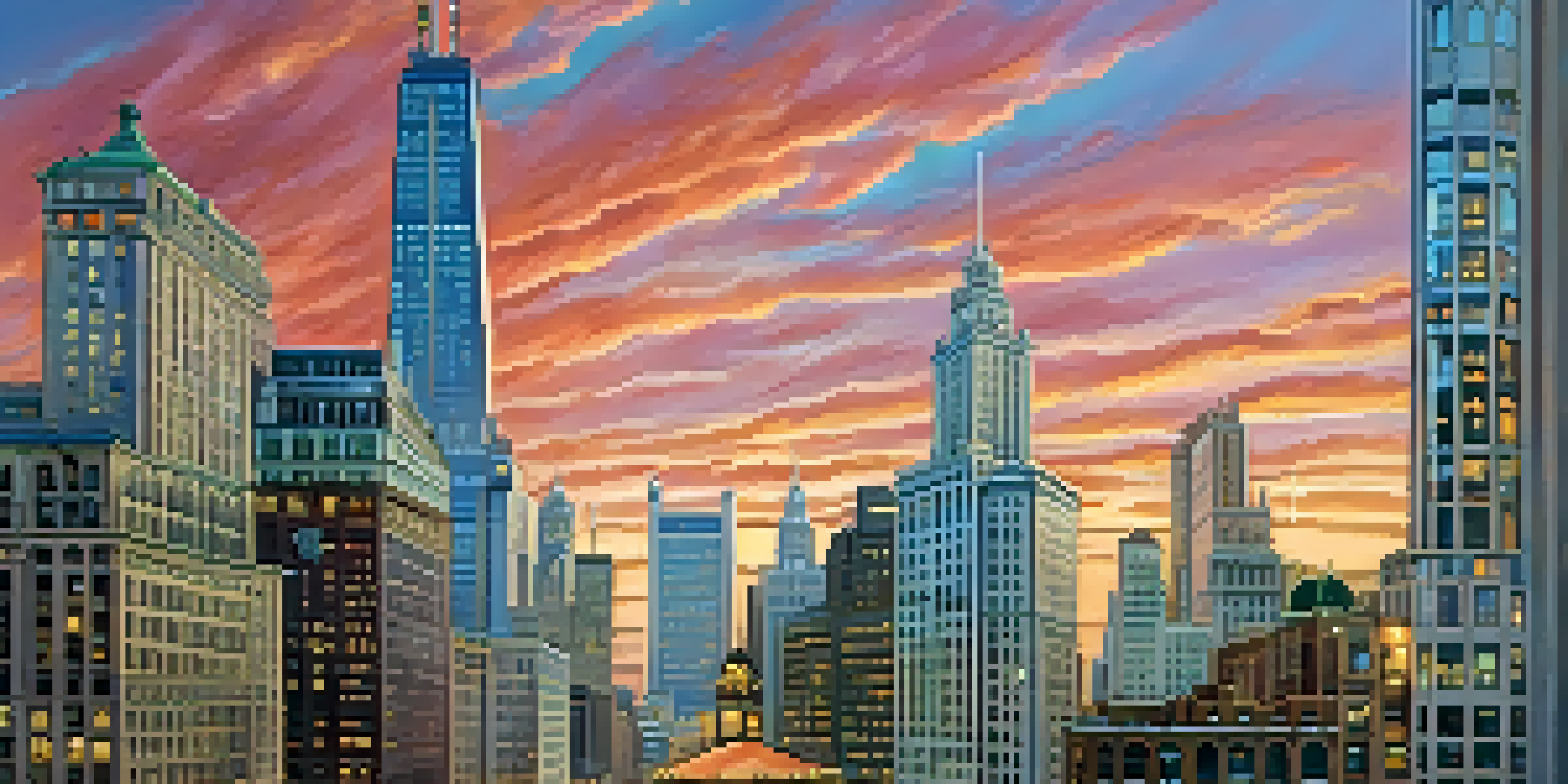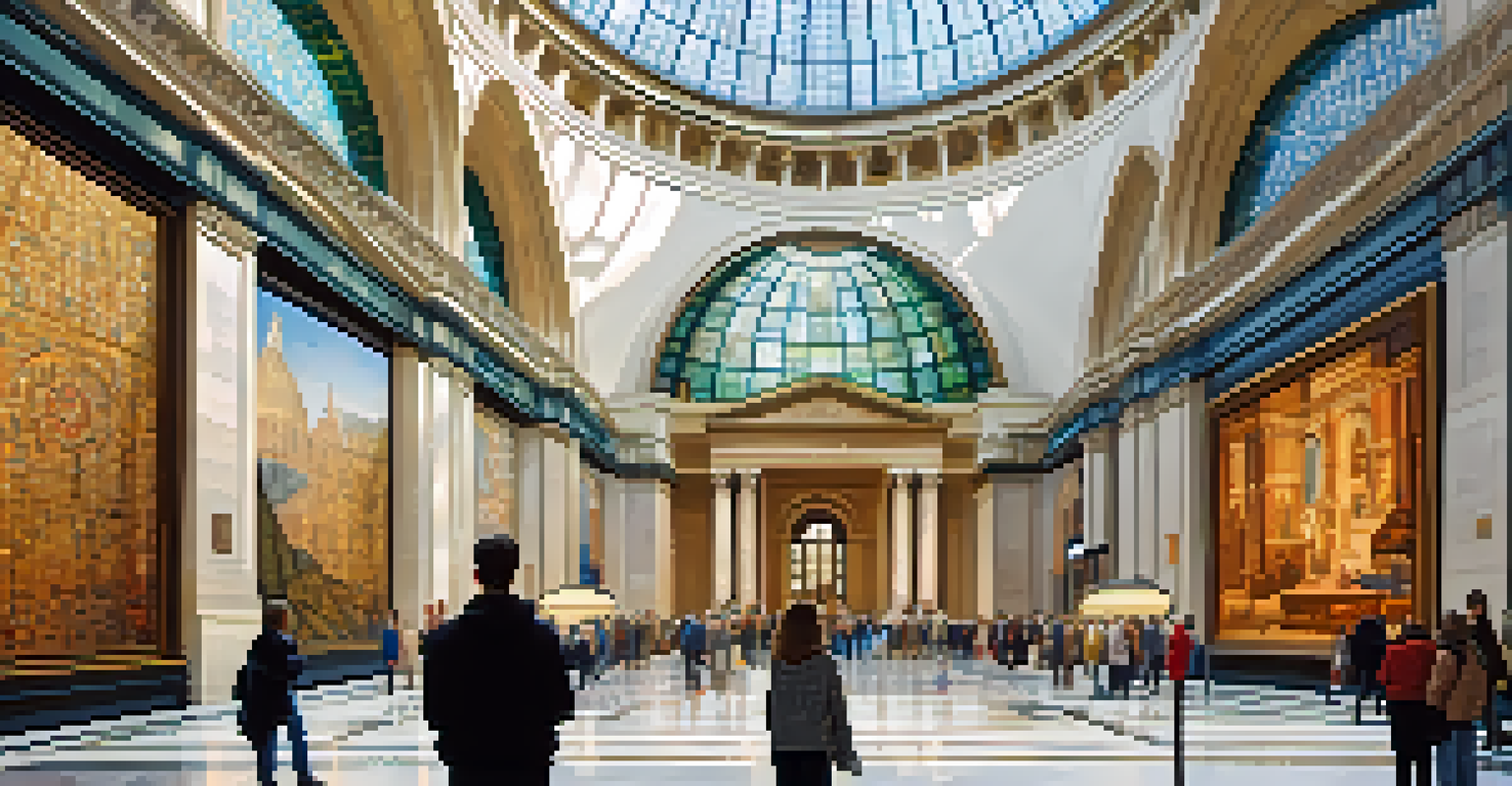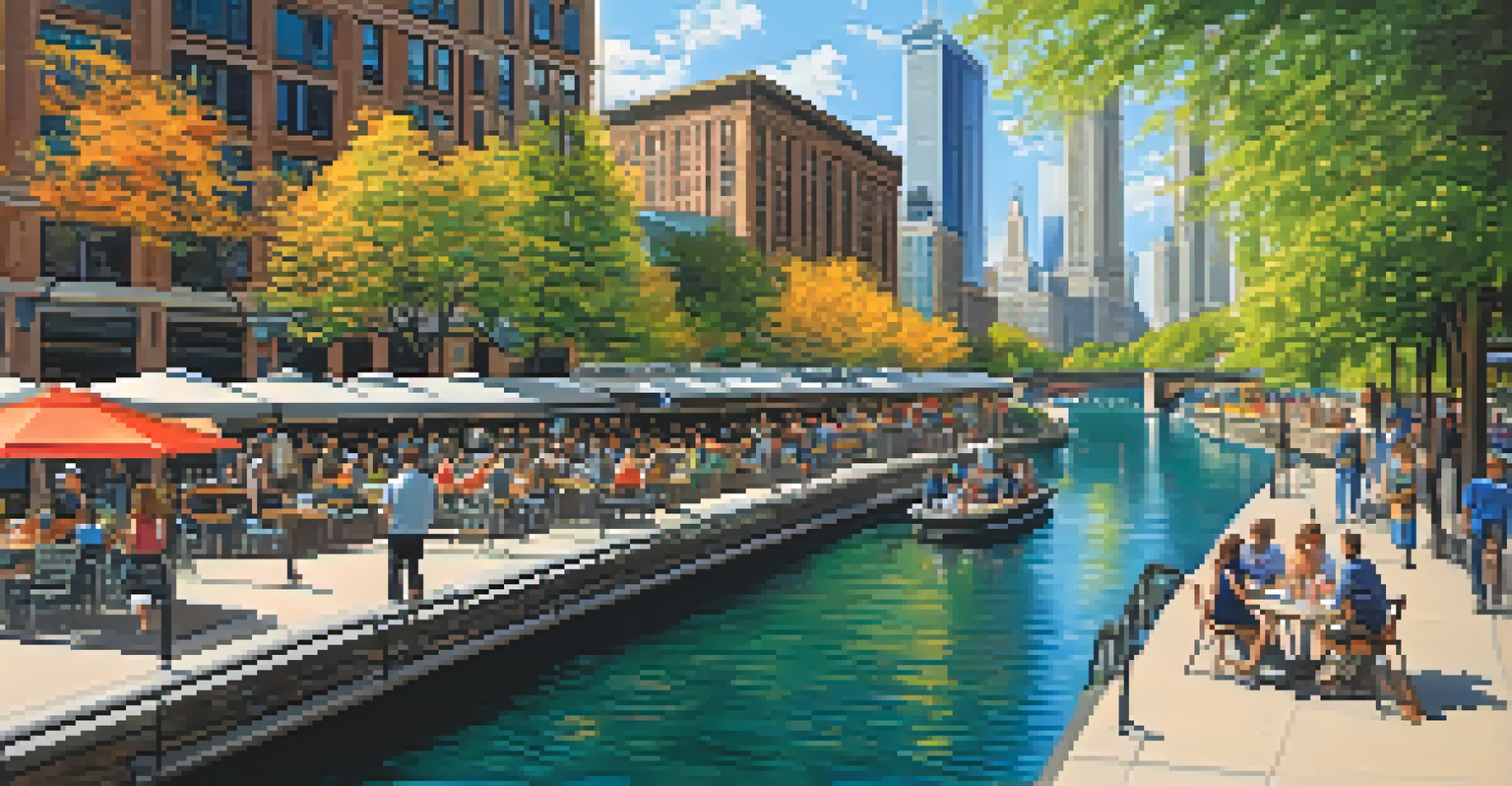Chicago's Architectural Wonders: Art Meets Functionality

The Magnificent Mile: A Blend of History and Modernity
The Magnificent Mile is not just a shopping destination; it's a showcase of Chicago's architectural evolution. This iconic stretch along Michigan Avenue features a stunning mix of historical buildings and modern skyscrapers that tell the city's story. From the Art Deco beauty of the Wrigley Building to the sleek lines of the John Hancock Center, each structure adds to the vibrant character of the Mile.
Architecture is the learned game, correct and magnificent, of forms assembled in the light.
Walking along this street, you can feel the pulse of the city, where each building whispers tales of the past while embracing contemporary trends. The juxtaposition of styles creates an engaging visual narrative that captivates both locals and visitors. It's a perfect example of how functionality can coexist with artistic expression in architecture.
Furthermore, the Magnificent Mile serves as a reminder that architecture is not just about aesthetics; it’s also about creating spaces that enhance urban life. With its mix of shops, restaurants, and cultural landmarks, this area exemplifies how thoughtful design can enrich community experiences.
The Willis Tower: A Sky-High Marvel of Engineering
Once known as the Sears Tower, the Willis Tower is a testament to Chicago's innovative spirit and engineering prowess. Standing at 1,450 feet, this skyscraper held the title of the tallest building in the world for 25 years. Its design incorporates a unique bundled tube structure that provides both strength and stability, showcasing the harmony of form and function.

Visitors flock to the Skydeck on the 103rd floor, where they can step out onto glass boxes that extend beyond the building’s edge. This exhilarating experience perfectly illustrates how functionality can create stunning visual experiences. The tower not only serves as an office space but also as a thrilling tourist attraction, merging practicality with excitement.
Chicago's Architecture Tells Stories
The Magnificent Mile showcases a blend of historical and modern architecture that narrates Chicago's rich history.
The Willis Tower is more than just a building; it's a symbol of Chicago’s resilience and ingenuity. It represents how the city has embraced architectural challenges to create spaces that are both iconic and usable, reinforcing the idea that great design can elevate everyday life.
The Art Institute of Chicago: Where Art and Design Intertwine
The Art Institute of Chicago is not just home to an impressive collection of art; its architecture itself is a work of art. The museum features a blend of Neoclassical and Modernist styles, creating an inviting space that encourages exploration and creativity. Its iconic lion statues guard the entrance, welcoming visitors to a world where art and functionality coexist beautifully.
The best way to predict the future is to design it.
Inside, the layout is designed to enhance the viewer's experience, with galleries that flow seamlessly from one to the next. This thoughtful design allows visitors to immerse themselves in the art without feeling rushed or overwhelmed. It exemplifies how architecture can amplify the impact of the artworks displayed within.
Moreover, the museum's recent Modern Wing, designed by architect Renzo Piano, showcases the evolution of contemporary architecture. This addition demonstrates how new designs can harmoniously blend with historical structures, emphasizing that both art and functionality can thrive together in a single space.
The Chicago Riverwalk: A Scenic Example of Urban Design
The Chicago Riverwalk transforms the city’s waterfront into a vibrant public space, showcasing the importance of functional urban design. This beautiful promenade allows residents and tourists alike to enjoy stunning views of the city while providing access to various recreational activities. It's a perfect example of how architecture can enhance natural landscapes and community engagement.
Along the Riverwalk, you'll find restaurants, cafes, and public art installations that invite people to gather and socialize. This thoughtful integration of amenities encourages a sense of community and promotes an active lifestyle. The design emphasizes accessibility, making it easy for everyone to enjoy the riverside experience.
Public Spaces Enhance Community Life
The Chicago Riverwalk exemplifies how urban design can create vibrant public spaces that foster community engagement.
The Riverwalk is a testament to Chicago's commitment to creating spaces that blend beauty, function, and environmental awareness. As cities around the world strive for sustainability, the Chicago Riverwalk stands as a model for how urban design can foster connection while respecting nature.
The Tribune Tower: A Gothic Gem in the Windy City
The Tribune Tower is a stunning example of Gothic Revival architecture, standing proudly on the shores of the Chicago River. Completed in 1925, it showcases intricate detailing and a unique blend of materials, including stones from around the world. This tower not only serves as a headquarters for the Chicago Tribune but also captivates visitors with its architectural splendor.
One of the tower's most fascinating features is its collection of stone fragments from famous landmarks, including the Great Wall of China and the Taj Mahal. These pieces tell a story of global history, emphasizing the tower's role as a bridge between cultures and time periods. It's an architectural treasure that invites exploration and appreciation.
The Tribune Tower serves as a reminder that functionality can also embrace storytelling and artistry. Its design encourages both admiration and curiosity, illustrating how architecture can contribute to a city's identity while serving practical purposes.
The Chicago Cultural Center: A Beacon of Arts and Community
The Chicago Cultural Center is a stunning example of how architecture can serve as a hub for community and the arts. Housed in a former library, this building features breathtaking mosaics and a magnificent Tiffany dome that captivates visitors from the moment they step inside. It’s a space where beauty and functionality converge to celebrate Chicago's rich cultural heritage.
As the city's official reception venue, the Cultural Center hosts a variety of events, from art exhibitions to concerts, making it a vital part of Chicago's cultural landscape. Its design fosters creativity and collaboration, encouraging community engagement in the arts. The building itself is a canvas that reflects the vibrancy of the city’s artistic spirit.
Frank Lloyd Wright's Lasting Influence
Frank Lloyd Wright's philosophy of organic architecture continues to inspire modern designs by emphasizing harmony with nature.
Moreover, the Cultural Center exemplifies how public spaces can inspire and uplift communities. By offering free access to art and culture, it reinforces the idea that architecture can be both functional and enriching, making art accessible to everyone.
The Legacy of Frank Lloyd Wright: A Master of Design
Frank Lloyd Wright, one of the most influential architects of the 20th century, left an indelible mark on Chicago's architectural landscape. His philosophy of organic architecture emphasized harmony between human habitation and the natural world, revolutionizing the way we think about building design. Structures like the Robie House showcase this vision with their flowing lines and integration into the landscape.
Wright's designs often feature open spaces and natural materials, creating a sense of connection to the environment. His work encourages us to think about how architecture can enhance our lives while respecting nature. This approach has influenced countless architects and continues to inspire modern designs today.

The legacy of Frank Lloyd Wright serves as a powerful reminder that architecture can be both functional and profoundly artistic. His ability to blend beauty with practicality has shaped the way we view our living spaces, making him a true pioneer in the field of design.